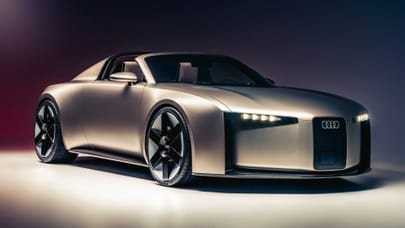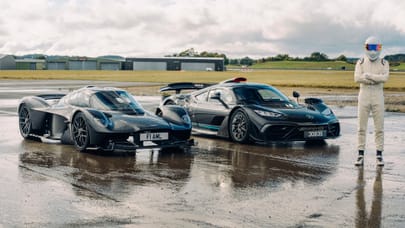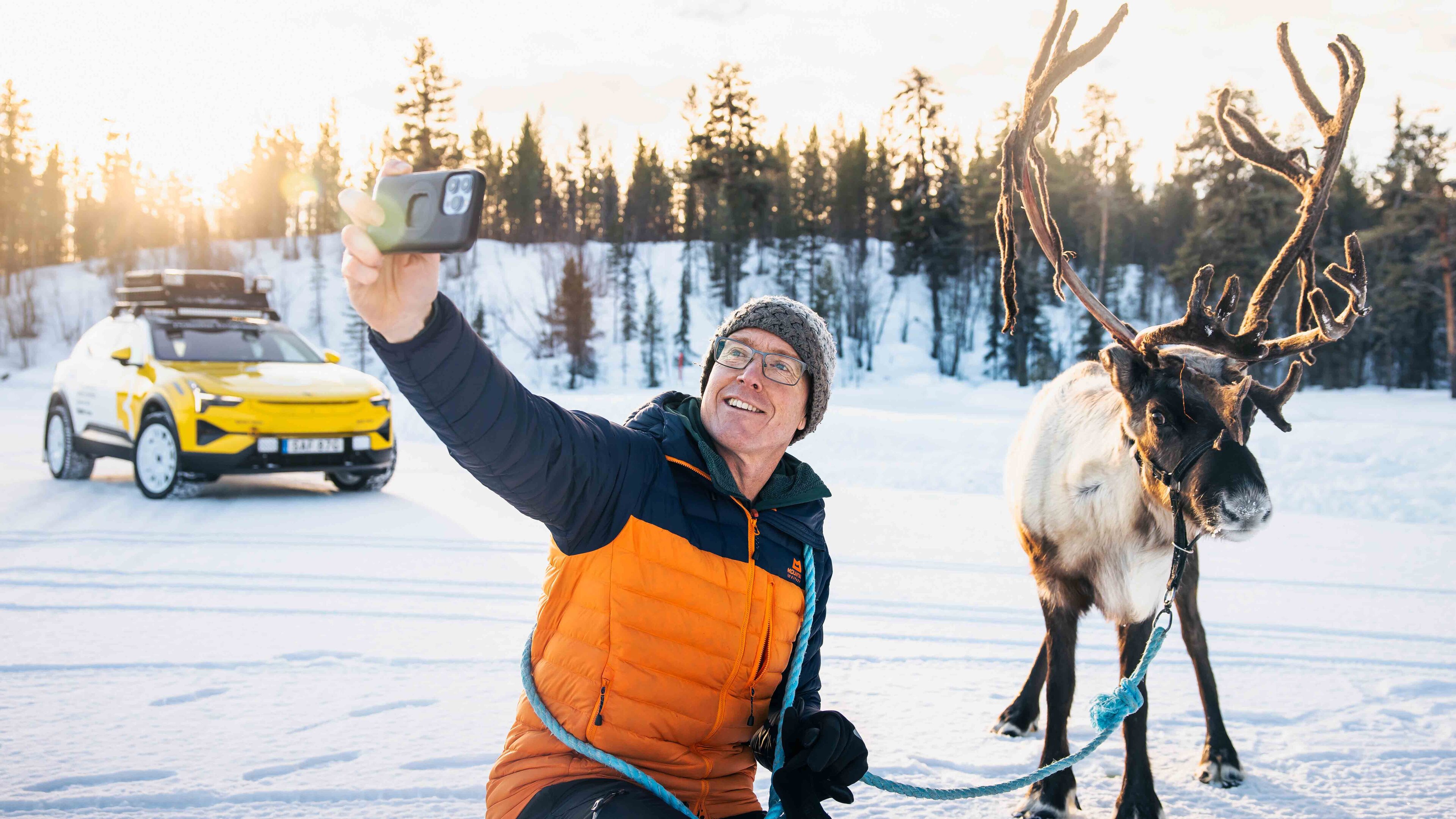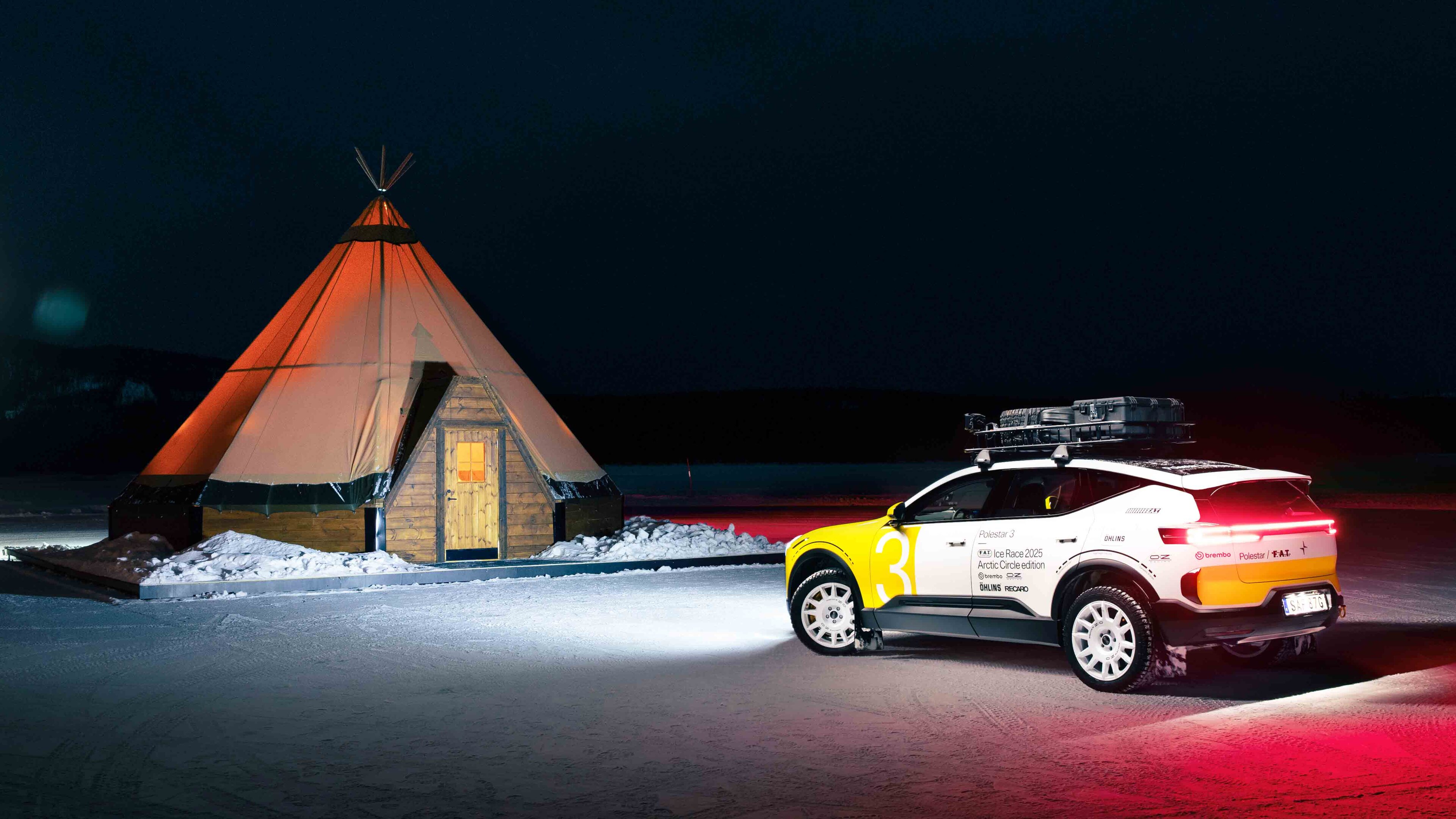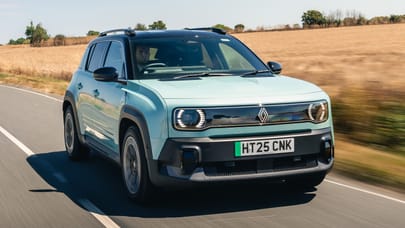
Herding reindeer in the Polestar 3 Arctic Circle... in the Arctic Circle
Polestar has made a 3 Arctic Circle special edition, so we decided to test its credentials in a slightly more unusual way
“I think I will name him after you.” I think this might be hasty. For starters I don’t believe Ollie the reindeer’s future prospects extend to ‘named pet’. And I think his recent bout of affectionate behaviour has less to do with my Sami tendencies than a peculiar hypnosis with the colour of my jacket. Not for the first time, I wonder if Rickard is teasing me.
Rickard Länta is a Sami reindeer herder. It’s tough up here, up above the Arctic Circle. Sure it looks pretty and bright, a friendly wilderness of trees and snow that I’m sure offers up enough sustenance and protection to be survivable if you know what you’re doing. Yeah, about that. All I’ve done is apply technology to this situation: GPS mapping, technical fabrics, electric motors, phone signal and so on. What I’m lacking is knowledge. Meanwhile, the only technology Rickard appears to have at his disposal are the three knives worn at the waist of his heavy, tough clothing. I don’t believe his knowledge is lacking.
The standard Polestar 3 is technology turned up to 10. It’s a connected car that successfully channels cutting edge solutions, while also being a beautifully designed, clean driving and thoroughly useful SUV. That’s why we’ve chosen it as EV SUV of the Year. But up here I need more, which must be why Polestar created the 3 Arctic Circle, adding the studded tyres, snow ladders, shovel and extra spotlights that turn this car into more of a survival cell. All of which might just come in very handy.
Photography: Jonny Fleetwood
The plan is to use the ‘Arctic Circle’ to herd reindeer within the Arctic Circle. It didn’t have to be this Arctic Circle mind you: Polestar has built three Arctic Circle cars, the others predictably based on the 2 and 4. All have been treated to suspension lifts, OZ rally wheels with studded tyres, custom Öhlins dampers, Recaro bucket seats, mud flaps, tow hooks and so on. So you, like me, are imagining they’re trite nonsense, mere show ponies.
But that’s to ignore the input of a chap called Joakim Rydholm, Polestar’s mildly obsessive, entirely cheerful head of driving dynamics. This is a man who has been known to travel around test tracks harnessed in the boot of cars while trying to track down squeaks and vibrations, “and sometimes sat in the frunk too, touching damper mounts and bushings with my fingers”. Rallying since he was in short trousers, Polestar’s reputation for clean, crisp dynamics is entirely down to him.
So when it came to developing the Arctic Circle one-offs, he applied his rallying nous. Despite Polestar’s CEO specifically telling him not to mess around with bits of metalwork that would interfere with practicality, the 2 wears a strut brace across the boot and the frunks of all three are interrupted by strengthening bars linking damper mounts to crash structure. The suspension has been retuned, the 4 now has a hydraulic handbrake and, well, I have an ice lake and three cars to play with.
The aim is to choose one to use for this adventure. I know before I get there that’s going to be the 3, but there is no more fun you can have in a car than sliding around on an ice lake. So I spend the morning pretending to agonise over choice while hooting with laughter, towing rooster tails and nerfing snowbanks. What’s more, the cars are fun to drive. OK, there’s a point mid-morning when a chap by the name of Stig Blomqvist turns up in a ratty old 3 Series and that looks like heaven, but the Polestars, despite their weight, are surprisingly deft, well balanced and uncannily good at working out where the torque vectoring needs to send the power. Four wheel drifts ahoy.
Top Gear
Newsletter
Thank you for subscribing to our newsletter. Look out for your regular round-up of news, reviews and offers in your inbox.
Get all the latest news, reviews and exclusives, direct to your inbox.
I regretfully leave the lake with its metre thick ice and set off to track down Rickard. Apart from the crackle of studs on surface at low speed, handing over to a slight roof rack whistle as we hit main roads, progress is super smooth. Snow has that effect, dulling noise. But the ride is majestic, the 3 plush and composed, looser limbed than the standard road car, sinking more into its travel as it barges along forest tracks, dappled sunlight twinkling through the trees.
We stop a few times. I can’t resist a bomb into a snowdrift or breaking out the binoculars to see if that branch was actually a set of antlers. We head up a hill to get a vantage over the landscape. Below, nothing moves as far as the eye can see. It’s so still and quiet that even the landscape seems to be hibernating. Electric power is perfect here, no nasty, polluting hydrocarbons pumping into the pristine air, no vapour clouds, no noise. The Polestar fits this place well.
There’s a problem or two with my plan though: a) at this time of year reindeer largely herd themselves and b) any herding is done from skidoos, not cars. Turns out reindeer don’t follow roads. So essentially what I’ve done is drive as far as I can to the general vicinity of some reindeer, who then have to be herded towards the car so Jonny can get pictures of them together. Not quite what I had in mind.
In the winter Rickard, his son Jovva-Anta and the rest of his family are merely semi-nomadic. The reindeer don’t wander too far or too fast as they have to dig down through the snow to find the lichen and fungi that sustain them. There are no boundaries, no fences up here, but each herder is expected to keep their reindeer in their own area, “each day we have to patrol the edge to keep track of the animals and make sure they haven’t strayed and that’s a big job... my area is 60km around”.
The 3 Arctic Circle – and the regular 3 we rate highly enough to give this award to – are each perfectly in tune with this still, silent landscape
I want to ask how many reindeer he has, but the one thing I know about the Sami is it’s rude to ask. Why? Because it’s like me asking you how much money is in your bank account. In many ways reindeer are still their currency. I get around to it indirectly by asking how many reindeer are needed to earn a living from. “One person needs about 300 reindeer to survive,” says Rickard. “Because each year you need to slaughter 75 or 100 to earn enough money to live. A family needs 500–600.”
So why not breed more? “The grazing won’t be good enough for all of them, and then you don’t have good quality reindeer, which aren’t worth as much and then you get a reputation...” His voice tails off. Reindeer meat is valuable, fetches around £8 a kilo, a whole carcass around £600 as every last bit of it is used. The horns are ground up (“in Asia they think it’s an aphrodisiac”, Rickard tells me with a bemused smile), the skins, fur, bones, feet, even the velvet that falls from the horns, it’s all used.
The herding happens from March to May and is a social affair. Families come together to drive their animals to higher pastures in the mountains about 300km away. I assume they head there because the grazing is better, but Rickard puts me straight. “Mosquitos. The reindeer hate them like we do, so we get them away from the lakes and water where they breed.” The calves are born in early summer (which marks the start of the Sami year), the bull males, of which there are around 14–18 in a family herd, fight for dominance in September, the herds return to lowlands for winter and the process starts again.
Ollie is big – eight years old and 80–90kg. Reindeer are usually smaller and younger when they’re slaughtered, but as a dominant bull he’s had a stay of execution. He seems quiet and docile, mostly happy to be led around. “Yeah, he’s castrated, it makes them much calmer.” Rickard hoists his trousers and my eyes flick to his knives. “We use the knife for everything,” he says, interpreting my glance. And he really does, from nicking the ears to identify them, to cutting wood for fire, to um, yeah, invasive surgery.
It’s a peaceful, separate existence, up here in Europe’s last remaining wilderness, and yet the outside world intrudes. Rickard has been fighting to prevent poorly regulated forestry which has been upsetting the ecosystem, and there’s tension between Sweden and Sápmi – the Sami name for this land.
The herders’ way of life is diminishing. “Only, I think, 15 or 20 per cent of Sami want this,” he tells me, gesturing into the woods. “Do you know where the biggest Sami population is now? Stockholm.” Rickard’s son is one of the few keeping the tradition alive. “I tell you how I knew he would follow me. I gave him a mobile phone, because, you know, he’s a teenager, and two weeks later he lost the stupid thing and came to me and asked for another. And I said, ‘Well, I can’t afford to buy you one now, but what I can do is go into the woods, slaughter two of the reindeer and then use that money to buy you a phone.’ He went away, and came back 10 minutes later and said, ‘No Daddy don’t slaughter the reindeer, we need them.’ That was very encouraging for me.”
Rickard admires the Polestar, but his appreciation of it is akin to mine of his reindeer. Unless it’s one with a red nose, I’ve got no idea how to assess or appreciate it. For me the 3 Arctic Circle – and the regular 3 we rate highly enough to give this award to – are each perfectly in tune with this still, silent landscape. But this isn’t a playground for Rickard, it’s a working environment. There’s no room for romanticism. And none for a reindeer with a name.
Trending this week
- Car Review
BMW iX3






